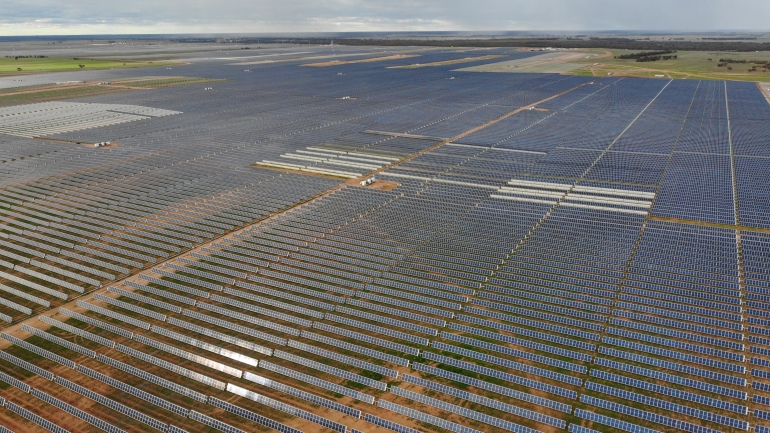The 255 MW Sunraysia Solar Farm is one of Australia’s largest solar projects. Owned and operated by Australian-Chinese renewables developer Maoneng and U.K.-based infrastructure investor John Laign, the project is set for completion by December. The news has been welcomed with great excitement at UNSW, with the university set to receive 100% of its electricity from the project from 2020 onwards.
UNSW Estate Management signed a 15-year power purchase agreement with Maoneng Australia and Origin Energy in December 2017. The agreement is the first of its kind, as it brings together a retailer in Origin Energy, Maoneng as project developer, and a “corporate” in UNSW, toward the goal of covering 100% of the university’s energy demands. The tripartite agreement will see UNSW purchase up to 124,000 MWh of renewable energy per annum from the project, equal to approximately 25% of its generating capacity.
The project’s completion means that UNSW will meet one of its environmental sustainability goals. “Excellent progress is being made with the construction of the solar farm and we are on target to achieve our ESP goal,” said UNSW Energy Manger Nicholas Jones.
UNSW’s credentials as a solar research hub are well established, both at home and abroad. It is not difficult to imagine scores of budding UNSW solar engineers and researchers using Sunraysia as a learning tool for years to come.
AGL Energy has also signed a 15-year power purchase agreement with the project, an agreement that will see Sunraysia’s electricity form part of the NSW Generation Plan, as it looks to transition towards a renewable grid with the decommission of the aging Liddell coal-fired generator.
Since the ASX-listed EPC Decmil Group broke ground on the site in late February, between 350 to 400 people have been directly involved in its construction. With all the earthworks, trenching and cable laying complete and the installation of more than 755,000 JinkoSolar 255W Cheetah mono PERC modules, well over the halfway mark, the completion of one of the largest solar farms in the world is set to be operational just in time for summer.
By Blake Matich
This content is protected by copyright and may not be reused. If you want to cooperate with us and would like to reuse some of our content, please contact: editors@pv-magazine.com.



By submitting this form you agree to pv magazine using your data for the purposes of publishing your comment.
Your personal data will only be disclosed or otherwise transmitted to third parties for the purposes of spam filtering or if this is necessary for technical maintenance of the website. Any other transfer to third parties will not take place unless this is justified on the basis of applicable data protection regulations or if pv magazine is legally obliged to do so.
You may revoke this consent at any time with effect for the future, in which case your personal data will be deleted immediately. Otherwise, your data will be deleted if pv magazine has processed your request or the purpose of data storage is fulfilled.
Further information on data privacy can be found in our Data Protection Policy.